The pace of technological change has never been more dramatic. Success isn’t just about adapting to disruption – it’s about getting ahead of it. My guest on today’s show, Jay Samit, is a renowned expert in turning market challenges into breakthrough opportunities.
As chairman of a leading AGI company and former NASDAQ CEO, Jay has driven innovation at Universal Studios, EMI, Sony, and Deloitte. His bestselling book Disrupt You! guides entrepreneurs worldwide in ten languages. His unique approach has helped launch multimillion-dollar ventures without spending a dime on marketing.
In our conversation, we explore fresh ways to leverage artificial intelligence and spot hidden market gaps. Jay shares fascinating examples of partnering with larger companies to achieve massive scale. He explains why tomorrow’s marketing success depends on seeing patterns others miss.
Through real-world stories and practical strategies, you’ll learn how to position yourself ahead of major market shifts. You’ll discover specific techniques to build lasting competitive advantages in a world of rapid change. If you want to master the art of turning disruption into opportunity, this conversation is packed with actionable insights. So, without any further ado, on with the show!
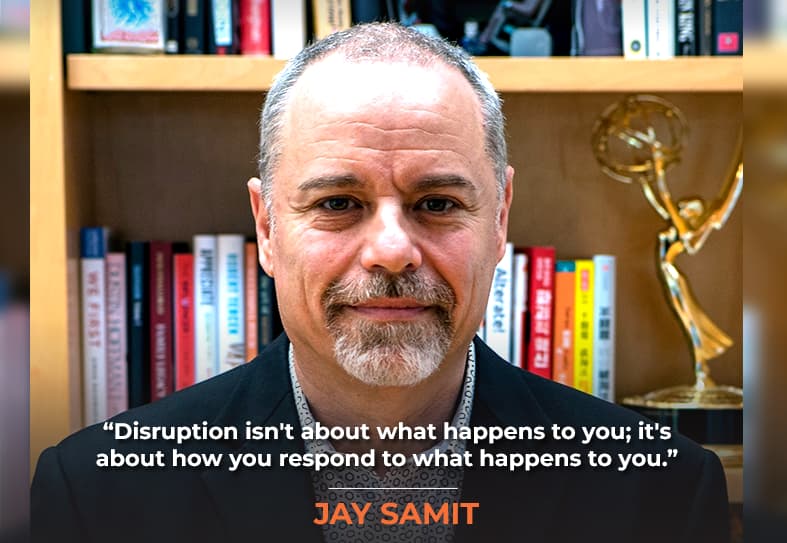
In This Episode
- [02:21] Jay Samit warns that AI could replace half the audience’s jobs, stressing reinvention. He highlights AI’s power for marketers, eBay’s unconventional growth strategy, and budget-free partnerships with major brands.
- [11:23] Learn how to dominate a niche market through a homeless immigrant’s success story and gain practical steps for a success-driven mindset with daily goal-setting and high-impact tasks.
- [19:25] Jay and Stephan delve into the importance of mentorship and how surrounding oneself with the right advisors can dramatically accelerate success.
- [27:10] Explore new AI and cognitive science frontiers and how these innovations are leaning towards more efficient and sustainable models than traditional large language models.
- [31:41] Jay provides a realistic forecast of AGI, explaining its potential impact on various industries and how it could revolutionize the economy at a scale as significant as electricity or the industrial revolution.
- [32:27] Discover the looming threats and transformative capabilities of quantum computing and how marketers can leverage AI to predict market changes with incredible accuracy.
- [36:48] Jay shares how rapid change creates opportunities and explains his daily practice of identifying three problems to spot market gaps and innovative solutions.
- [49:21] Jay offers free services to quickly become a sought-after expert and achieve explosive business growth.
Jay, it’s so great to have you on the show.
Good talking to you again.
Yeah. So you were a guest on Get Yourself Optimized on my other show, and I loved what we talked about. I just had to have you on this show and have something that was really targeted at marketers and the marketing world. So, thank you for doing this.
Sure. Happy to do it.
All right, so let’s talk about how AI is not something to be feared but used as an opportunity to innovate and reinvent yourself, your career, your business, and your market.
Let me challenge the question.
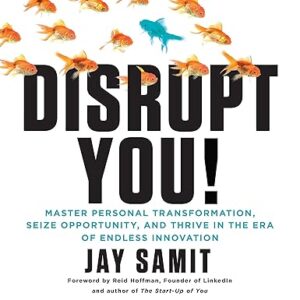
Okay.
Half of your listeners will lose their jobs in the next year. AI will replace most marketing jobs and middle management, but it’s similar to when Reid Hoffman and I launched LinkedIn. At first, all the headhunters go; this is the greatest tool because we can find people easily and do everything. And then, one day, they wake up, and the tool has replaced their industry. So, there are still some headhunters who are very niche and offer specific things that the generalist can’t get. And that’s the lesson: You can quickly embrace this tool and compete with a firm with 20 or 50 people. But at the same time, you’ll see that departments with all those people will migrate to using AI and have fewer people involved, getting greater ROI on the investment dollar.
So you really have to reinvent yourself. And I’ve been preaching this forever. When Disrupt You! came out a decade ago, I said that half of all jobs would disappear by the end of this decade. When I spoke at Davos exactly a year ago this week, the head of the World Monetary Fund spoke before I did and said 40% of all jobs will disappear globally in the next two years. That’s a banker saying that. That’s not a crazy entrepreneur. But I want to get across to your audience and what has been my ethos from the beginning: disruption isn’t about what happens to you. It’s about how you respond to what happens to you.
So, these tools suddenly give you superpowers. They give you the ability to do things that you could never imagine before. They’re not flawless. There’s a lot of things that they don’t do. But in marketing, they’re good. Because today’s large language models do not think, they do not solve. They look for patterns. So they’re really good at anything that doesn’t need an absolute answer, like two plus two.
So, looking at mammograms, a doctor’s seen 10,000; they’ve seen 100 million. They can see the associated patterns and see breast cancer 10 years before a human will see it. The same is true for marketing. They’ll be able to get insights. There’s only one advantage that you can have in the 21st century: getting insights from your data faster than the competition. And that’s what the game’s about. So we have a lot of bad data.
We have a lot of useless data. So, figuring out what to input, what to look for, and where to find the difference. Also, remember that most of us still live in an analog world. And so there are other ways that can be just as effective. When we launched eBay, we knew some crazy collectors collected stuff in the early days. But how do you reach them? The average person on the Internet was in their 20s. Collectors were in their 40s and 50s. No one could figure out anything.
There is only one advantage you can have in the 21st century, and that is to get insights from your data faster than the competition. Share on XTo make a long story short, we rented many school buses in one summer and took them to every swap meet around the country with signs on them. Free ice cream from Baskin-Robbins. And you went on. And there was somebody sitting at a terminal. What are you collecting? They went onto eBay. Is this the thing? And they go, “Yeah, how do I get that?” And we signed people up, and suddenly it exploded. All of the major platforms and the billion-dollar companies I’ve been involved in the launch have all figured out how to do some type of marketing outside of the digital world.
Inside the digital world, you also have to remember to get partners. And I talk about this a lot. And these tools will help you make a better case for your partner. I don’t care what you’re marketing, what you’re selling, what your product is. There is a big giant company that’s not a competitor and also wants the same people, right? If you’re marketing orthopedic shoes for old people, somebody wants to sell them insurance, you know? So, figure out who that giant company is, and then figure out what you’re doing that can deliver them to customers more effectively than they’re doing. Not to hire them as a customer but for you to use their money, OPM (other people’s money), to get your product out there. So I had the unfortunate task of learning how Sony was falling behind Apple and the iPod and how they play catch up. I had no budget.

Apple was spending $100 million a year advertising iTunes, and I had to launch a competitor. So, I looked at who was in trouble and who was open to a new idea. Because if you’re doing great, you don’t want to hear from me. And McDonald’s was having their worst year ever. The first time sales went down, United Airlines was in bankruptcy. And I went to both of them, and I went to McDonald’s, said, “I can make you cool again.” To make a long story short, they spent millions and millions of marketing dollars to run an international campaign. Buy a Big Mac, get a free track.
So, on every Big Mac box, there’s a code. You go to our store, sign up, and get your free track. They deliver 20 million paying customers in our first week in business. Nobody has the marketing budget of a McDonald’s. Nobody has the reach of McDonald’s. We were on every tray liner, every bag, every commercial, every window, and on United got Sheryl Crow to do a concert in the sky. The first time it’s ever been done from Chicago to LA. We filled the plane with the press, showing that you could use your sky miles for other things like music.
And now, every person on every United flight for a month saw that concert. So the result is the two things that delivered me millions and millions of paying customers were done on a budget of $0.00. Now, you have to go and use your tools to keep the customers and keep marketing and find all the things we know how to do with SEO and other tools. But it’s really about leveraging someone else’s strength. And so right now, there’s a lot of big brands in big trouble because they’re not as nimble, they’re not as quick as adapting to how to use a new tool, and they’re like deer in the headlights. So if you can come up with that solution, you’ll be embraced and get to spend their money to help your cause.
Yeah. So, what would be an example for somebody who’s running a marketing agency or consultancy and selling B2B solutions in the business-to-business world? So, who would they partner with and use OPM or no budget in order to create a lot of interest?
So, the key is not to buy the same words and do the same thing that everybody else is doing. Where can you reach your audience that is a different place than everybody else is reaching them? How can you then do it more effectively? And I’ll give you the example that comes to mind. When was the last time you saw a Rolls-Royce TV commercial?
Never.
Do you ever go to any of the big auto shows? Detroit, Louisiana, anywhere? Have you ever seen a Rolls-Royce booth? No. Do you know where Rolls-Royce spends its marketing dollars? They show up at places that sell jets. So, the shows that show off the new jets. Because if you’re sitting there, do I buy the $60 million jet or the $100 million jet? It’s a rounding error to pick up a car while you’re there, same audience, but there are no other cars that you’re competing against. So it’s that way of looking at things. Where can you go differently?
Subaru famously did this when, as a small car company, they couldn’t compete against the big guys for the NFL or this, that or the other thing. When looking at their buyers, they noticed that they had a large following in the lesbian community. So they moved their marketing dollars and the subtle messages in their ads, right? They moved who they were hiring to be in the ads that may be known to one audience but just look like a model and an ad for another audience, and their sales exploded.
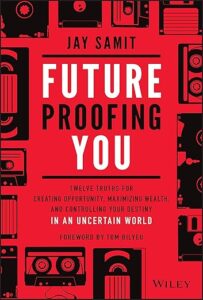
So today, again, you have to find that insight that separates what your client or your market is going for because everybody else who can spend money can always outspend you. From a marketing standpoint, I started my own company. One of the startups I did in this space was acquired by a News Corp, Fox, for $200 million after 18 months because we showed them how to do something they hadn’t figured out.
In my second book, Future Proofing You, I took a homeless immigrant, mentored him one day a week for a year, and he went from homeless to a self-made millionaire. And he did that by starting a marketing company. And it’s the same message. He wanted to do social media marketing. And I’m like, Coca-Cola isn’t going to hire a kid on the street to do their marketing.
So I said, “Look at what everybody’s talking about. Look at something that’s new and make yourself known as the one firm that only does social media marketing for that one niche.” Get your first clients; do it for free. But then you have what Harvard calls a case study, and they’ll line up around the block, and when you have more customers than you have time for, you charge more. And that’s how he went from nothing to spoiler alert if you read Future Proofing in under a year to make a million-dollar profit.
Yeah, that’s amazing. I think I know who you’re talking about, too. He was actually a guest years ago on this podcast.
So people don’t think that some get rich quickly. My rules within were quite simple. You know, daytime is for making sales calls, nighttime is for doing the work, and no TV, dating or any fun for 12 months. But he was willing to work harder than most people do to spend the rest of his life living better than most people will.
Markets are going to be decimated. Big giant companies continue to disappear. That means billions of dollars are in flux and moving, which is an opportunity.
So, I think it was a fair trade, and that’s the message here. Markets are going to be decimated. Big giant companies continue to disappear. That means billions of dollars are in flux and moving, which is an opportunity.
If everything was done the same way, the same guys would be on the top, and there’d be no point to life. So it’s a great time if you’re willing to go for it. And never have the tools been cheaper or access to capital been easier. And post-pandemic, there is a need to be in a high-rent city or first-world country. You can run your business from anywhere in the world using talent that’s just as bright and maybe less costly or have a better work-life balance on the board of a company where our CFO decided to live in Costa Rica. Smart. There are Google engineers who no longer say why should I share an apartment with three other dudes in Silicon Valley when I can get my own place a block from the beach in Hawaii and do the same work and get to surf every day?
That’s great. And what are some of these daily habits of the people you find to be resilient and the real future-proofed type of folks you write about?
So, in my book, I write about the 12 truths you must live and embrace. But it starts with having a positive mindset. If you think you can or you think you can’t, you’re right. So why not start with the think you can? And when you start, and if you start every morning in the mirror, today will be better than yesterday, and I can make it so. And you say that to yourself. This may sound like some hippie-dippy stuff, but your brain listens to what you’re saying. It doesn’t know the truth from reality. Reality is what it’s processing.
So it lights up your synaptic nerves, okay? Releases the oxytocin. And what that does is make you happier, complete, have more sales, be more likable, and have a better love life. People want to be around you. It changes everything from there. From that very simple step, the next thing is, what are you going to accomplish today? If you go into your day and let the day swallow up all your time, everybody has the same 24 hours. So those emails will come in, which will be interesting, and you’ll waste your whole day. But if there are five things on the list that have to get done today, you do them in the order of priority, and you do nothing else until you’ve done those five things. And at night, you review your list and make your next list.
Higher IQ doesn’t translate to wealth. Going to better schools doesn’t translate to wealth.
And those people who have daily lists exceed better now, the other thing. And my books show all the research behind it so that you don’t have to think it’s some lunatic. Higher IQ doesn’t translate to wealth. Going to better schools doesn’t translate to wealth. The only precondition that translates to wealth is being a member of the lucky sperm club and being born into it. Okay, so don’t focus on that if you’re not the billionaire’s son. And by the way, within two generations, most of the time, money gets squandered. But there are more self-made millionaires, and there is a self-made billionaire every 32 hours.
So I don’t know what you did this past weekend, Stephan, but you’re a slacker. So I look around, and the self-made billionaires are getting younger and younger. Kylie Jenner, one of the Kardashians, is a self-made billionaire with a B at 21. And you go, “Well, she’s a Kardashian.” There were no other billionaires in the family. So what did she do differently, what could you have done, and how do you leverage that same thing?
And that message that you gave earlier about getting partners, boy, did she do that in spades.
OPM money. I mean, the big decision that she made that was appropriate for her generation, that seemed obvious, but every other generation before didn’t, is when you go back to Elizabeth Taylor or anybody, the cosmetic companies, the perfume companies would go, “We’ll pay you a big fat check to license your name.” Why are they doing that? Because they believe your name can make them more money than what they’re paying you. So when the cosmetic companies came to Kylie, she asked why they did not just figure out where they get their cosmetics. They don’t make them. There are only two factories on the planet that make lipstick. So, all those hundreds of brands are two factories. Why don’t I just have my line? And that’s the difference. Instead of getting 2 cents a product, you get all the profit of the product.
Mr. Beast, if people don’t know who that is, the number one most viewed person on YouTube, if you aren’t watching and aren’t following, then you’re not understanding yet. YouTube is a marketing platform; the guy makes half a billion dollars. What is he doing that no one else has figured out how to do? And what he figured out how to do is really look at every interaction, look at the insights from the data, and optimize for it until he figured out a perfect formula for making some of the most engaging content. And now he’s expanded beyond that.

Amazon came with a big old check and said, “How big of a check do we have to give you to make a show for Prime?” And his show is killing it. So all these opportunities are open to everybody. There’s no gatekeeper blocking you. And as trite as it says, the one difference between my two books that I realized from mentoring Ben that I didn’t cover in the first book is you can’t do this alone. You will need a series of mentors in your life because the time it takes to be an expert in each aspect of things is wasted time when somebody is willing to share that expertise and wants to validate their existence by helping you move forward. And everybody I’ve met, whether in sports, entertainment, or business, will tell you that the sole difference in their life was a mentor.
Are you getting mentoring from somebody now?
I’m no longer trying to accomplish anything. I’m on the other side of this game. I’m not here to sell anything. I’m trying to pay it forward. I spent 10 years teaching this at the largest engineering school in the US. I got paid $15 a class, which cost me $16 to bark my best semester. I had a team of students do $100 million in a small semester. My biggest problem with the university was that most of my students who were doing well dropped out of the university and were making $50,000 a year off of these kids.
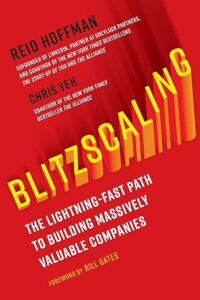
And I said, “Yeah,” but I’m sure they’re going to endow the university, right? But then I started writing the book because I thought I could scale how to pay it forward. And the biggest shock of writing the book and probably the most rewarding thing of my career is that I wrote it thinking about the US, right? Yes, I’ve held global jobs, but I know the US market, and I didn’t realize that the same principles work all over the globe, and people are thirsting for them. I’ve heard from readers in 140 countries that I could be having the worst day, and I get an email that I call a love letter from somebody telling me that the book changed their life. It didn’t. They changed their life. I just gave them a little push where they needed it. So, this is my mission.
How do we have problems? Entrepreneurs solve problems. So unless we teach people how to be entrepreneurs, and the key to any entrepreneur is marketing, unless you can build a market, it doesn’t matter how good your idea is. No one comes to you because you have the better mousetrap. My whole career has shown me that the better mousetrap, the better, the better, doesn’t necessarily win the market or sell the best. It’s the most clever, cost-effective way of scaling quickly. Reid Hoffman talks a lot about Blitzscaling.
That moment when you go really big. Coming from a Hollywood-centric background, it was always what’s the best star that I could go and attach to this thing and use it to reach a global audience.How can you do that? And you take 50 Cent’s vitaminwater? They offered him some money. He said, “Now, just take stock instead.” And his whole net worth, his vitaminwater, became a billion-dollar company off of the back of his marketing.
So you’re seeing a lot of new ways to reach stuff. And you’re now going to see virtual celebrities with AI, virtual celebrities. I don’t mean copies of existing celebrities. The number one TV star in China right now is not a human being. It’s a soap opera where the lead is gorgeous, but she’s not real. The number one influencer in Pakistan is a gorgeous gal. She’s not human. So, in the era of dealing with celebrities who can get in trouble, get arrested, get drunk, and do whatever, you can now own and contain them. Walt Disney once said he had an advantage over the other studios. If an actor was acting up, he could just rip them up. You can now create something with AI that can be proprietary and be a spokesperson that gets a huge social media following. Then, your cost of customer acquisition goes to zero.
Do you know anyone who’s creating virtual celebrities personally? Yeah. Can you share any stories?
No, I gave the ones that are out there. But I will tell you one that just went wrong. Because the one thing that you can never take for granted is trust. Don’t do anything squirrelly because once a brand loses the trust of its audience, it cannot be gained back.
When you try something, you either earn or learn, but you're better off than you started. Share on XSo, if you’re Meta Facebook, everybody that could use your platforms is already on your platforms. So, the only way to make more profits is to get higher engagement. Okay? And they’ve optimized algorithms and done everything. And somebody there looked at AI and said, “Wait a second, we can make a whole bunch of fake people not to cheat the advertisers, but to interact with live people, make the live people think that they built a friendship, spend more time on the platform engaging.”
And so they created this one woman, African American, who described herself as a queer mama, right? So she was gay or bisexual and had kids and whatever, this whole story. And she interacted with people. And what they didn’t tell any people that she was interacting with was created by 10 guys, nine white guys and an Asian guy. And so the whole thing is now blown up in their face as basically digital blackface. They were making up fake minorities and fake differences to go after different audiences to get them to engage more. Horrible.
I hadn’t heard that one. Yeah, that is horrible.
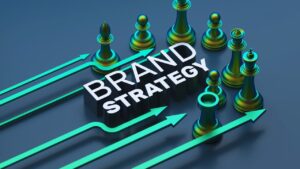
Yeah. The other one had the same premise, but it was done in a way that I would have given them an award for because it was so clever. How does Spotify make more money? Everybody who is going to use Spotify is already on the platform. Okay? Everybody’s listening as many hours as they have time to listen. So you’re not going to get more engagement. So the only way to make more money would be to reduce costs. I come from the music business. It doesn’t matter whether you’re listening to The Beatles, Korn, or AC/DC; you’re paying the same royalty per song. But what if our algorithm knows what you like and what you listen to, and we use AI to make up songs that sound like something that you’d like and mix them into your playlist? Because those songs we play have zero royalties.
And for a huge chunk of the Spotify audience, 15% of what they’re listening to is this made-up stuff. So, there are always people using things in ways that don’t seem obvious. I mean, my entire career is. No one ever hired Jay Samit because they were having a good year. They turned over all the cards. We tried everything. Let’s give this lunatic a shot. And that’s how I ended up running these giant companies.
We're here to heal the world, solve problems, and make a positive difference. The tools are there; you must put yourself out and create your own luck. Share on XThey were kicked enough to say we’re willing to try anything, not because they had the answer. I quadrupled the stock. A major international company that had been around for years and years because of this approach to things. And at the end of the day, these tools give you superpowers. They let you take a B test faster, they let you scale, and they let you interact. But they’re not without their flaws. So you really have to understand what they can do. Today’s AI is as dumb as AI will ever be.
Large language models will go the way of Model T, and you’ll see new ways of dealing with artificial intelligence, such as what Versys does; changing it, both reducing the energy consumption and the cost of running these large models, is unsustainable.
Let’s talk about some of these other models and what’s coming down the pike. AGI and you mentioned versus and so forth. Let’s prognosticate a bit for our listener who’s not up to speed with all that stuff.

So, I don’t want to dive deep into science because you’ll lose your entire audience quickly. But the chief scientist at Verses a guy named Karl Friston, a genius. He went to the same school in London where the geniuses that run the AI at OpenAI and Meta came out of the same professor, all one school of thought, and they all went down one path. And Karl went, I don’t think LLMs work. What if we use cognitive science? Look at how animals learn, how plants learn, and how things actually learn. As opposed to, let’s take a big pile of stuff, dump it in here and look for associations. And so it’s called Active Inference. And now you can teach things to learn, and they actually learn. AI doesn’t learn.
AI only knows what you put in the bucket. So, as we start using things we learn, we will learn things that mankind hasn’t already learned. And that’s when the hockey stick goes up on innovation and change. And if some AI figures out an orthogonal way to predict the stock market, you’ll wake up tomorrow, and one entity won’t do everything. I mean, it’s that size of a race right now.
So, the same thing can be done with sales, marketing, and supply chain. I mean, the supply chain was always relegated to people you didn’t invite to board meetings and who did it until the pandemic. In doing the post-analysis, the one thing that came out of the pandemic that nobody ever paid attention to or looked at as a factor in anything was what it costs to rent a shipping container to ship your stuff from Asia to the US or from the US to anywhere.
AI only knows what you put in the bucket. As we start using things we learn, we will learn things mankind hasn’t already learned.
But when fewer ships were going during the pandemic, to get on a ship cost you more money. Certain products were not going to make the ship because high-end computer chips would make the ship, not empty paint cans. So I remember I stumbled upon this piece of data when, like all of us, I decided to do some redecorating. When I was stuck in my house, I went to the store to get those little quart cans of paint so my wife could look at five different things on the wall, and they said,” We have to sell you gallons. There are no quart cans.” So I went to their competitor. No one had a quart can. And now I figured out why.
So what else wasn’t making the ships? Where else would the supply chain break down? So now AI can look at any anomalies in manufacturing and retail sources through the whole supply chain and accurately predict the dollar and the day and date when changes will happen to markets worldwide. How many marketers today base their marketing decisions on real-time supply chain data? I’m willing to bet no one in your audience, but I know the companies doing that. Why market something that will be sold out by the time your marketing hits or won’t hit the date when your marketing hits?
I’ve seen that misalignment happen from giant companies where the greatest campaign is if it’s not on the shelves, and now you need to bake that in so much earlier. And what is the unboxing for product X? Could you defray the cost of that delivery by putting just one flyer in there for some other company that wants to reach that same audience? Because you can guarantee that that box will hit certain zip codes on a certain date. So, in the same way that magazines, when they still existed, figured out how to do regional ads in their printing, you can now do that with physical products in your supply chain. And your mechanized warehouses are already doing this on a big scale. But AI lets the little person do this and optimize things that were usually outside the focus. We’ve now finished this product, and you figure out how to market it.
Those days are gone.
So, where does AGI fit into this? Artificial general intelligence is as big of a game changer as electricity.
Yeah.
During the Industrial Revolution. So, what’s that going to shake out for our listeners?
So that could be five years from now. That could be 30 years from now. So this isn’t. We’re going to get a headline tomorrow. Now, the way that I’ve spent my career predicting the future, I do not have tarot cards or crystal balls. The best way to predict the future is to hang out with those coding it. So, my clients are the big giant tech companies that will own this space because they have the deepest wallets. Somebody else may come up with it, but they’ll buy it.
Google didn’t get to be Google because they invented everything. Apple didn’t invent everything. Microsoft, you buy the leaders in the space. So, quantum computing will probably come before AGI. Quantum also changes everything in scary ways. But I wouldn’t worry about AGI right now because when it comes, it’s a winner-take-all market.
You have to focus on what you can get ahead of, focus on that no one else is, and be the best in the world with that one thing.
So what does that mean, a winner-takes-all market? Is that going to shut down the entire economy or put it all in the hands of one company?
It’ll control whatever parts of the economy it wants to control. There’ll be no competition with it. Quantum’s the same way. So if a rogue nation-state, you pick your own who you think is bad or good, gets Quantum first and wants to just be evil like Dr. Evil, no more passwords or encryption work. Things that would have taken a century to decrypt will be a second. So, there’s no more stock exchange, electrical grid, or money in any bank accounts. It all disappears.
There’s no more Internet, there’s no more phone. It can shut down any country and shut down every car. I mean, there are groups that I work with in government that are focused on the day after that happens and try contingency plans. So Quantum is a huge disruptor on the positive side of AI that we’re not talking about, which is most of the diseases that aren’t self-inflicted AI can cure. And that’s amazing. Specialized drugs that we could have never figured out, such as the combinations and the molecular structures, are happening daily. Detecting diseases decades before. When you have a chance to modify your life, it’s one thing to say: cut down on eating whatever you’re going to get a heart attack.
It’s another saying you will have a heart attack in June 2027. You only have so many months to save your life. So we’re getting into that type of data-rich world. Robotics is the other combination, allowing seniors to live independently longer. I mean, there are a number of things that you can now have assistance with in self-driving cars. I have one, and it is great, but it’s even better for someone blind. So there’s a yin and a yang. The difference is we’re living in an era of endless innovation where things are changing at faster than Darwinian rates. We are not designed to adapt to this much change as a meat puppet.
You must identify a problem when something is inconvenient. Most of what we do is autopilot.
So you have to focus on what you can get ahead of, focus on that no one else is, and be the best in the world with that one thing. And because you’re a click away from 8 billion people, you can create dynastic wealth quickly. And people haven’t paid attention. But this is what Silicon Valley has been doing for 40 years. They’re not funding innovation; they’re funding the next monopoly. Because if they fund something and get far enough ahead, they own the market. In the old days, you had Coke, Pepsi, Ford, and GM, who were Google’s and Apple’s competitors, and they each ended up with their own. They get so big that they get into each other’s lanes at some point, but that’s where AGI will make someone king.
Yeah, it’s exciting. Slightly terrifying time to be alive.
Well, it’s not boring.
Yes, what’s the old Chinese curse? May you live in interesting times.
Yep. And I am still amazed that there are people who are probably listening to your show in their 20s, who will see gaps that no one else is seeing and be able to, within a year, create a billion-dollar company. It still happens all the time. It’s still very possible. Most of them are not focused on marketing. So the other thing is, how do you find that client that can’t pay you that you’d rather take equity than just get some consulting fee for a few thousand dollars?
All right, so is there a process that you recommend or teach on how to innovate and come up with those kinds of gaps and opportunities in the market that no one else has seen?
Yeah. So, I have a process that I call. I wish I had a clever name, but it’s three ideas a day for 30 days. So today, not tomorrow. Write down three problems in your life. The first day is easy. We all have problems. By day three, most people had run out of problems because they had accepted the way life was. Most of what we do, from when we wake up to when we go to sleep, is autopilot. We’re really not thinking outside of our routine. So, if you have to know that, you must identify a problem when something is inconvenient. So a buddy of mine was taking his medicine one morning, the phone rang, got off the phone, and it’s like, “Did I take my pill? If I took it and I took another one, that’s not good. If I didn’t, oh, that’s even worse.” So, he came up with a thing called a timer cap. Takes a little 25-cent watch. You open the cap; it starts ticking. Oh, I opened it eight hours ago.
Oh, I opened it three minutes ago. Then, you can add Bluetooth to that. So your family knows that you took your medicine or your doctor or your doctor can restrict when you can open for opioids or whatever. Huge company. One problem that no one else was focused on, and that’s the other thing that most people don’t understand that I talked about and disrupt you is you don’t have to be the one that invents the flux capacitor, the printing press. We all hear of these things that just came out of left field. You can just look at something being used over here and use it elsewhere. Market your failed product to a different audience.
And we use thousands of failed products every day that were just pivoted.
So what would you recommend as a next action for our listener besides that 30-day process, which is brilliant? I’m going to suggest that every listener follow that process. But what would be some just immediate next actions that they might take?
Go talk to your grandparents. None of them will tell you something they did and failed at. They’ll tell you something they didn’t have the guts to try.
And on that point. And again, I have nothing to sell anybody. I don’t write books to make money or help the world. On my website, jaysamit.com, I have workbooks that you can download for free to help you through this process and get you stage by stage to think this way. And I partner with HP to get them to every boys and girls club in America to show high school kids that aren’t going to college that there’s a choice between prison and would you like fries with that? What I would really recommend is to start with the simplest thing. It’s January. What do you absolutely want to achieve in the next 12 months? Now, work backward. You don’t have to know all the steps, but if you want to be a doctor, you probably have to go to med school.
And if you want to get into med school, you probably have to get good grades. You can work backward. And who are the people who have the knowledge that will help you leapfrog along that line? How do you start engaging with them and interacting on their social media feeds? Don’t go out of the blue. Will you be my mentor? Because the answer is as effective as going to a bar and saying, “Will you sleep with me?” It’s not how life works. You have to build a relationship, and you’ll now have a roadmap for optimizing your next 12 months. And I will tell you, if you live that type of focused life, you’ll get much greater results. And if you’re afraid to start, let me just leave you with this thought. Go talk to your grandparents.
Go to the senior center and ask old people what they regret. And none of them will tell you something they did and failed at. They’ll tell you something they didn’t have the guts to try. So, live in 2025 with no regrets. You will fail. When you try something, you earn or learn; either way, you’re better off than you started. So, if you understand that it’s not going to be a smooth road, you’re going to keep on getting smarter. And that’s where those insights that we talked about, the very first sentence of this podcast, by trying something that no one else tried and going deeper into the woods, you’re going to get insights that no other company had because they didn’t go down that path.
And that’s where the big billion-dollar idea comes from. We all start with the same general ideas but don’t work on them. Or we say, “Well, if it was that easy, somebody else would have done it.” And my books are filled with stories of the simplest things. I’ll leave you with one that I find unbelievably inspiring. When you were in school, did you have a science fair where you had to do a project? I am the prototypical baking soda and vinegar volcano. Okay. It’s like, I got to do something. Making something explode. That sounds cool.
When you try something, you earn or learn; either way, you’re better off than you started.
So there was a girl in high school in the States whose parents weren’t scientists. They’re not anything. They’re just mom-and-pop. And she’s doing her science fair, and she learned somewhere that hospitals are the fourth leading cause of death in the US. Not what you went in for, but the infection. She said, “Why don’t they make suture stitches that change color if the wound’s infected?” She starts playing with vegetables in her fridge, and her pH balances.
Smart enough to have watched Shark Tank or read my books or whatever to go and get a patent. And that patent now saves hundreds of thousands of lives a year. She’s going into college now, wealthy, but so inspired not to. How do I just take a class to get a grade and party? She already knows she can change the world. What will she do with the next 40 or 50 years of her life? What a failure. I feel like, I mean, that’s what you should be looking for. We’re here to heal the world. We’re here to solve a problem.
We’re here to make a positive difference. And the tools are there.
That’s a great story. It feels like a positive conspiracy or some sort of miraculous turn of events.
But if you look at it the other way, it seems that nobody’s job at the suture factory is to make a different suture. How do we make them cheaper? Whatever. How do we get our sales guys to get us in front of more hospitals? No one was looking at changing the product. And that’s what I’m trying to say here. And I conclude by providing future proof to you with a whole chapter on the state of our planet. Okay, it used to be eco-friendly and was a marketing tagline. It wasn’t really solving anything. But that has changed because being environmentally positive actually translates to the bottom line.
I failed more than anybody listening because I’ve taken more shots, but the ones that hit have been unbelievable.
So Walmart, not your leftist hippie dippy company, realized after employees that their second biggest cost was energy. So they got rid of all the fluorescent lights that did everything and cut their energy use like crazy. Target, their competitor, goes, “Whoa, we’re going to look like idiots.” Now, Target, with its giant roofs, is the largest private solar panel company. All right? They’re grid-free. I mean, it goes on and on and on and on. And your customers, especially Gen Z and beyond, don’t want to buy wasteful stuff. They don’t want to support any corporation that’s antithetical to their values.
So, for marketers, what a great area to be known for and make a difference in. So, if I was starting over, I’d be in marketing.
That’s awesome. Okay, last question. Anything that pops into your mind would be like an incredible miracle in your life, and it doesn’t have to be related to business or career. It could be something personal. But anything you’re willing to share with our listener about a miraculous turn.
Of events for you, oh, my entire existence is a miracle. I’m dyslexic. I was written off as a small child who goes sit in the corner and play with Play-Doh. You’re not going to amount to anything. And it turns out one out of three Fortune 500 CEOs are dyslexic. Richard Branson, the list goes on and on because we think differently.
Turned out to be a strategic advantage and a superpower. But I’ve been blessed to have the luck of bumping into so many people who have propelled me forward. One criticism of my book is that I’ve worked with Steve Jobs, Bill Gates, Reid Hoffman, Richard Branson, and all these people. “Oh, it’s easy for you. You know all these people?” No, my dad made sandwiches; okay, I was a middle-class kid. But I put my ideas out there, and it doesn’t qualify as a miracle. That’s a heavy thing. However, on my bucket list of items, I never thought that would happen, as I minored in speechwriting in college.
If you tell people they’re special and treat them, they become special.
I wanted to learn how to communicate. And I study presidential speeches like crazy. I know it’s boring for most people, but. So my fantasy was, wouldn’t writing a speech for the president be great? And one day, I’m sitting at my desk, and nobody at a startup company that I started, I’m in my 30s, I’ve got maybe 20 employees, and my assistant says, “The president’s on the line.” I go, “The president of what?” I picked up the phone, and somebody with this really bad Arkansas accent was there. I made the president of the United States prove to me that he was the president of the United States because why would the president have been calling? But he had read a column that I wrote and wanted to do a speech on that topic. And he said, “One hour.” I go, “A one-hour speech.” He goes, “No, I needed it in one hour.” And knock it off the bucket list. I got to write a thing for Bill Clinton. It was out of body; I can tell you a thousand of them. But if you put yourself out there, you make your luck because no one could have as much luck as I’ve had in one life. Now, I failed more than anybody listening because I’ve taken more shots, but the ones that hit have been unbelievable.
And so if a moron like me can do it, and if you would have told me growing up as that poor kid that dozens of friends have become billionaires, I have never met a millionaire. I didn’t understand how anybody could have that kind of wealth. And some of these people are some of the smartest people on the planet. So that’s the miracle that you can make and become anything. I speak at high schools and colleges to motivate people to believe that. Vin Clancy had nothing going on for him to tell him that he could become a self-made millionaire. So, to get him, I instantly switched him to a positive mindset. Now, how do you do that? And I’ll tell you, you lie.
And there’s a psychological phenomenon called the Pygmalion effect. The professor went to school, tested all the elementary school kids, and told the teacher that six kids would be super learners and super achievers this year. And at the end of the year, those six kids outperformed everybody. It was unbelievable. Except the professor lied. He tested everybody, but he didn’t look at test results. Picked six names out of a hat. But if you tell people they’re special and treat them, they become special.
So I told Vin in our first meeting that I interviewed 200 candidates, and he was the only one who had all the attributes to be a self-made millionaire. He didn’t believe it, but he saw somebody older and successful and said, “I’ll go along with this lunatic.” And when, in his first month, he said, “I was making $70,000,” he could have flown to the moon without a spaceship. So, anybody listening to my voice, I believe you. I believe you can do it. I believe you can make the world a better place.
And if not now, then when? And if not you, then who?
Absolutely, yeah.
Amazing. All right, so if our listener wants to get either or both of your books, they want to learn from you in more in-depth ways. I know you don’t have a course or anything, but where should they go to learn more from you?
My books are on Amazon or wherever you want to get them. I have a website, J-A-Y-S-A-M-I-T.com, TED Talks. Tons of videos. I’m old; there’s a large body of stuff out there, but I wrote the books for the sole purpose of helping you on your journey, and that’s what makes all this adventure gratifying to me.
Awesome. Well, thank you, Jay and thank you, listener. Make it a better world, and we’ll catch you in the next episode. I’m your host, Stephan Spencer, signing off.
Important Links
Connect with Jay Samit
Apps & Tools
Books
Businesses/Organizations
Film
People
Previous Marketing Speak Episode
Previous Get Yourself Optimized Episode
YouTube Videos
Your Checklist of Actions to Take










About Jay Samit
 International bestselling author Jay Samit is a dynamic entrepreneur and entrepreneur widely recognized as one of the world’s leading experts on disruption and innovation. Described by Wired magazine as “having the coolest job in the industry,” Jay is chairman of one of the leading AI companies which is focused on creating Artificial General Intelligence. Samit has held positions as a NASDAQ company CEO as well as global executive roles with Universal Studios, EMI, Sony and most recently was the independent Vice Chairman of Deloitte. Samit’s technology columns have been published in Harvard Business Review, Fortune, and the Wall Street Journal and his book his book Disrupt You! is currently published in 10 languages.
International bestselling author Jay Samit is a dynamic entrepreneur and entrepreneur widely recognized as one of the world’s leading experts on disruption and innovation. Described by Wired magazine as “having the coolest job in the industry,” Jay is chairman of one of the leading AI companies which is focused on creating Artificial General Intelligence. Samit has held positions as a NASDAQ company CEO as well as global executive roles with Universal Studios, EMI, Sony and most recently was the independent Vice Chairman of Deloitte. Samit’s technology columns have been published in Harvard Business Review, Fortune, and the Wall Street Journal and his book his book Disrupt You! is currently published in 10 languages.







Leave a Reply